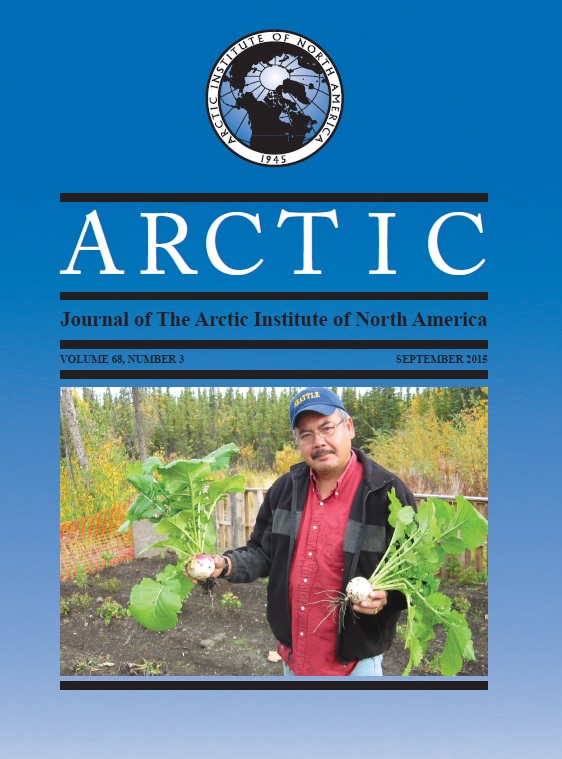Avian Communities of the Northern Mackenzie Mountains, Northwest Territories, Canada
DOI:
https://doi.org/10.14430/arctic4508Keywords:
alpine, bird community, climate change, Mackenzie Mountains, Northwest Territories, passerine, tundraAbstract
Basic knowledge of the abundance and distribution of birds and their habitats and the relationships between them is limited for many parts of Arctic Canada, including montane regions. This information is important for conservation purposes as bird populations and habitats shift and as interest in development of northern areas increases. We characterized bird communities in the Mackenzie Mountains of the Northwest Territories by conducting point counts (n = 376) in June 2009 and 2010 and using community analysis metrics (multiple response permutation procedures, indicator species analysis, non-metric multidimensional scaling) to statistically and graphically describe bird data in six habitat types: coniferous forest, deciduous forest, shrub (short and tall), alpine tundra, and open water wetlands. Distinct habitats had significantly different bird communities, as shown by using multiple response permutation procedures (p < 0.005). Of 51 species, 32 had significant (p < 0.05) indicator values for one habitat type (n = 15) or groups of habitats (n = 17) in an indicator species analysis. The tall shrub habitat type had the most indicator species (six species) followed by alpine tundra (five species), then the combined conifer, deciduous, and wetland habitat group (four species) and the deciduous forest habitat types (three species). Species richness was highest in the tall shrub (n = 37), alpine (n = 30), and conifer and short shrub (n = 29) habitats. We also observed eight bird species not previously known to occur in the area, or which were outside published ranges. Our results highlight the variability in bird community composition between the major habitat types in the Mackenzie Mountains, serve as a baseline for future bird studies in the region, and underscore the need for more research in the area with impending anthropogenic changes.


